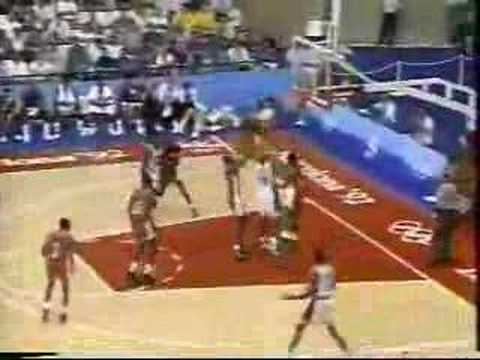The Portland Trail Blazers continued their busy offseason this past weekend with a trade that brought over Brendan Haywood, Mike Miller and two future second-round picks. The move itself was designed to acquire assets (neither Haywood nor Miller will likely ever suit up in Rip City), but the real story here isn’t what the team received, but what it gave up.
The Blazers officially announced the trade for Haywood, Miller and 2 future 2nd rounders for cash earlier this morning.
— Erik Gundersen (@blazerbanter) July 27, 2015
//platform.twitter.com/widgets.jsBy the letter of the NBA law, each participating team needs to give up something in a trade. Makes sense. But Portland technically didn’t have to give up anything at all to make the cap situation work. That’s why the Blazers were able to absorb the contracts of Haywood and Miller for virtually nothing. And with Haywood’s contract being non-guaranteed, the Blazers will waive the big man and maintain flexibility (aka: the ability to swing another lopsided deal in the near future).
So blazers pick up assets for being middle man. It’s good to have cap space. Wheeling & dealing not over
— Mike Rice (@mikerice6) July 27, 2015
//platform.twitter.com/widgets.js
Portland has become something of an enigma this offseason. Nobody quite knows what to make of the team’s acquisitions, but there’s no questioning that flexibility remains a vital part of Olshey’s plan.
Alongside Damian Lillard, the team now features a hodgepodge group of potential. The only catch is that potential only becomes useful when that untapped talent has ultimately come to fruition.
So here’s where we currently stand: Nobody is safe on this roster besides Lillard.
Pieces such as CJ McCollum, Meyers Leonard, Noah Vonleh, Ed Davis, Mason Plumlee, Al-Farouq Aminu, Mo Harkless, Cliff Alexander and Pat Connaughton all have potential, but that means they’re also all expendable.
In case you missed that, that list of players makes up almost the entire Trail Blazers roster. Not all of those guys are going to develop into stars, which means Olshey could swap multiple pieces from that group for an established piece to help close out the rebuilding process.
So who could become available? There are two different types of players typically involved in lopsided deals. Player A is someone who’s a miscast star on a middling organization. Think Andre Iguodala for the Philadelphia 76ers. He was always supposed to be the man, but when the franchise realized it couldn’t build around its supposed-to-be-superstar, it traded him in order to officially start over.
Player B is likely a first- or second-tier player who simply needs a change of scenery. Sometimes a new city or new organization can spark a flame that just can’t be lit elsewhere, and Rip City and the Trail Blazers could help a star do just that.
Your category ‘B’ players are always tougher to get your hands on, but could be well worth the cost. Think Jimmy Butler. If there proves to be any validity to the notion that he and Derrick Rose aren’t jelling, Portland could send over a package including two or three young pieces to help both teams rebuild.
Even more optimistically, think someone like DeMarcus Cousins. He’s a player who has all the talent in the world, but has yet to earn undisputed recognition as the best center in the game (and could certainly use a change of scenery away from the dysfunctional Sacramento Kings).
There’s also your Danilo Gallinaris and Eric Bledsoes. These players need to prove they’re worthy of their long-term contracts, and if their respective organizations decide they need to start fresh, Portland should be more than willing to dump a few players with potential to bring them on as complementary stars.
If I’m Nuggets I flush out roster and try to tank. Trade Gallinari. Build around Faried and WChandler. The West is just too stacked.
— NonStopHoops (@NonStopHoops) July 20, 2015
//platform.twitter.com/widgets.js
While there’s no way to determine which players Portland will target — or even which players will be on the trade block — it’s also unlikely to think the roster you see today will be the roster you see in Rip City for the next two or three years.
Consider every player on this team as an asset. We could see a few pieces shine along the way, but having leverage in cap space and young pieces puts Olshey in perfect position to make a swap in his favor as the franchise crawls back into contention.
Add The Sports Daily to your Google News Feed!
